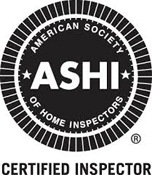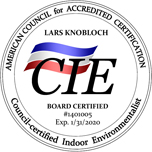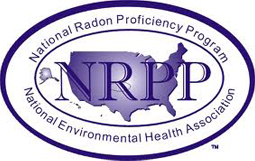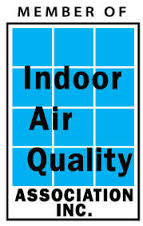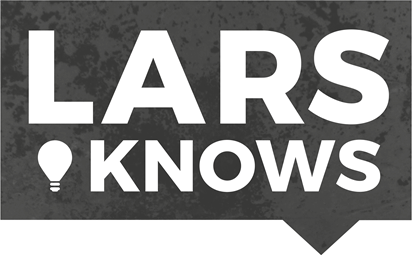Mold spores are a natural part of our environment and will always be present both outside and inside. Mold is breaking down organic matter like leafs and dead trees, and the exterior air has therefore a large count of mold spores,mostly in the summer.
Mold reproduces by means of tiny invisible spores that float around in the air, and will start growing inside when the spores land on a wet surface. There is around 1000 different types of mold found indoor across America, and none of them can grow without moisture. If you have mold, you also have moisture, or have had moisture in the past.
A mold count is the amount of mold spores counted in a certain volume of air collected over a certain amount of time. A dangerous level of mold counts will vary depending on the type of the species, time of the year and the location.
- Alternaria
- Aspergillus
- Ascospores
- Basidiospores
- Cladosporium
- Myxomycetes
- Penicillium
Not all types of mold are known to be allergenic. Certain mold spores are very small and light, and could float around in the air for days. These spores are likely to end up in in your respiratory system. Some of the most common allergic molds are:
- Alternaria
- Aspergillus
- Chaetomium
- Cladosporium
- Fusarium
- Mucor
- Penicillium
- Stachybotrys
There is no enforcement that can make the landlord clean up your mold, unless you can prove the presence of it. If you suspect you have a mold problem, contact your local mold inspector. On your own cost; have your air quality tested, and from there on you bring the results to your local health department. With evidence of dangerous levels of mold, the health department will do an inspection in the property, and send the landlord a warning to clean up within a certain number of weeks.
Often tenants claim there is a mold problem in their home just to get out of their lease. That is why many landlords ignore the complaints.
If you really think you have a real problem with mold, suggest this to your landlord:
Tenant pays for the air quality testing. If results are abnormal, the landlord will reimburse the tenant and properly remove the mold and correct the source.
The only way to legally get out of your lease would be to have evidence of dangerous levels of mold spores, and bring your landlord to court.
- If you see a black, green, gray, brown or yellow material growing on your wall, floor or ceiling it could possibly be mold.
- If you had any water leaks.
- If your humidity is high(60% or higher)
- If you have health issues you feel could be related to spending time in your home.
Molds can strengthen the typical asthma symptoms to sensitive individuals with asthma. Asthmatic’s should avoid exposure from mold.
Symptoms for short term mold exposure
- Headaches
- Sneezing
- Watery and/or itching eyes
- Itching or irritated skin
Symptoms for on and off mold exposure over a longer period
- Constant headaches
- Sinus infections
- Nose bleeds
- Ear infections
- Constant fatigue
- Loss of appetite and weight loss
- Neurological and nervous disorders
- Short term memory loss
- Hair loss
- Sexual dysfunction
- Asthma attacks or breathing disorders
- Bronchitis
- Coughing black debris or blood
- Nausea, vomiting, diarrhea and abdominal pain
- Skin rashes and open sores
- Swollen glands in neck and armpit area
- Pain in joints and muscles
- Fever
Symptoms for high levels of exposure over a long period
- Brain damage
- Long term memory loss
- Blindness
- Bleeding lungs
- Cancer
- Death
Contact your general health care provider who will determine if you need to be referred to a specialist.
It is highly recommended to have air samples collected for several reasons:
- Determining the counts of mold in the air will tell you if it is safe to live in your home, or if the levels are too high and you need to temporarily move out while the mold remediation is in process.
- To determine if the counts of mold spores are too high in the non suspected contaminated areas(where you have no visible mold growth). Often the rooms/areas adjacent to the area with visible growth could be contaminated with just as high counts of mold spores, and needs to be remediated.
- To determine the type of mold, and what precautions that should be made during the remediation process.
- After the remediation process is finished, it is highly recommended to perform post remediation samples. These samples will also be compared to the samples taken before the remediation started, to confirm that the mold remediation was successful.
The term mildew is often used generically to refer to mold growth, normally with a flat growth habit. Mildew is normally found on papers, fabrics, caulking in bathrooms, shower walls, and windows.
Mold grows more on porous and hard substances, and can be black, gray, blue, red or green, while mildew usually are white, gray or black in color.
Mold can look hairy and slimy depending on the type, and can be irregularly black or gray shaped spots.
Before starting the mold remediation, it is very important to correct the moisture/water source that is causing the mold growth.
Depending on the size of the job, it is highly recommended to have a certified and professional mold remediator to do the job. This to be confident that the right products are being used, and everything will be done in the right order to prevent cross contamination.
Mold growth on hard substances(wood,concrete etc), should be scrubbed hard with detergent and water.
Mold growth on absorbent or porous materials(sheet rock, ceiling tile, carpet etc) might have to be discarded. Mold is likely to be growing on the backside of the substance, and will be impossible to clean properly.
Make sure to use proper protection like face respirator, goggles and hand protection.
If you are insecure about how to clean your mold, you may wish to consult your local mold inspector or remediator.
Bleach is not a registered EPA mold removal product, but it is the cheapest solution compared to any commercial products. Mixing bleach with water could help you remove mold growth, but wont necessarily kill it. When cleaning off mold with a bleach solution the substance should be carefully monitored to determine if the growth could re appear. The best way to remove mold growth on gypsum board is to remove and replace the drywall itself.
Bleach is in general considered unsafe for cleaning/removing mold, and could do more damage to the individual that is cleaning than the mold itself.


